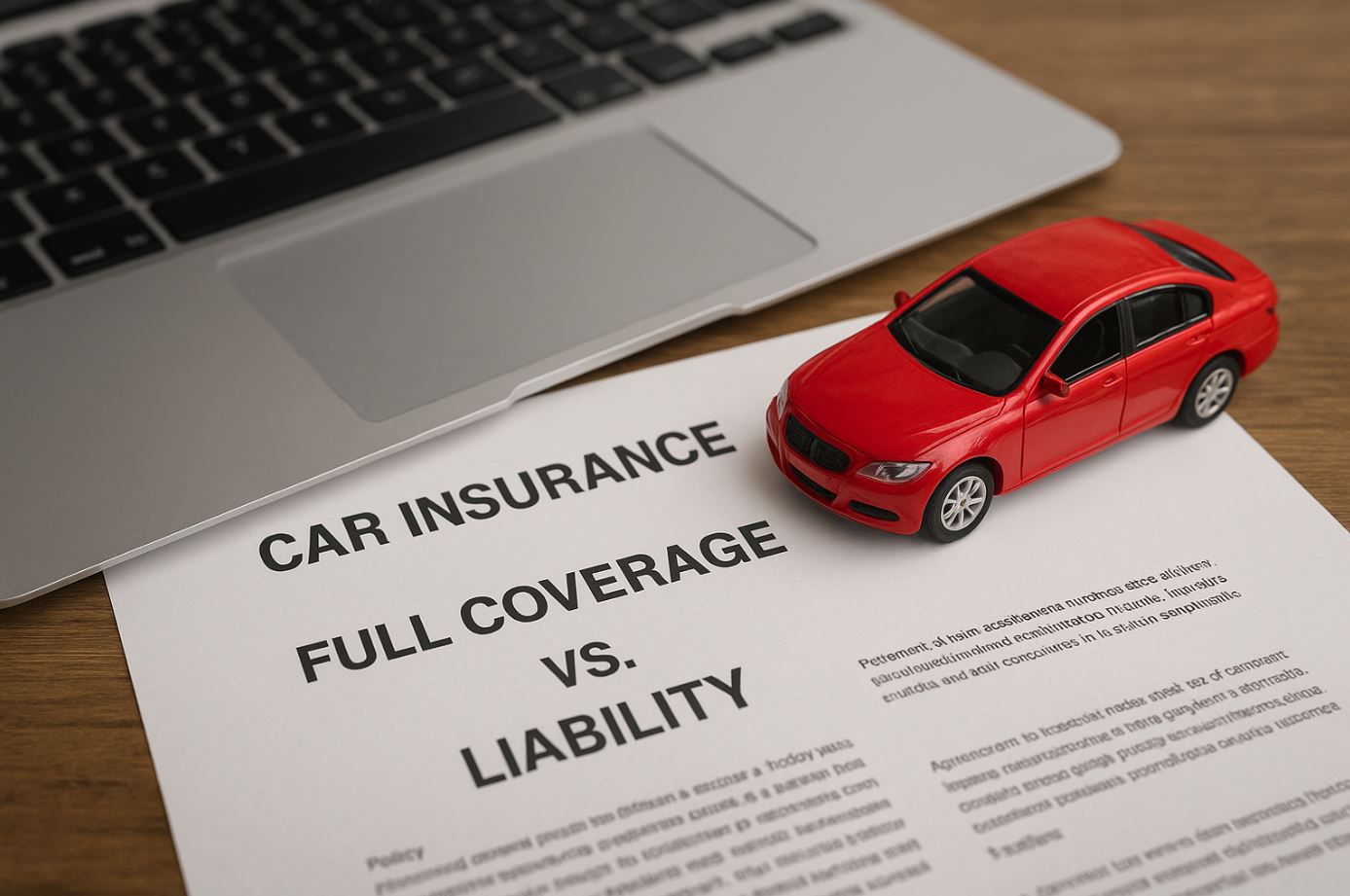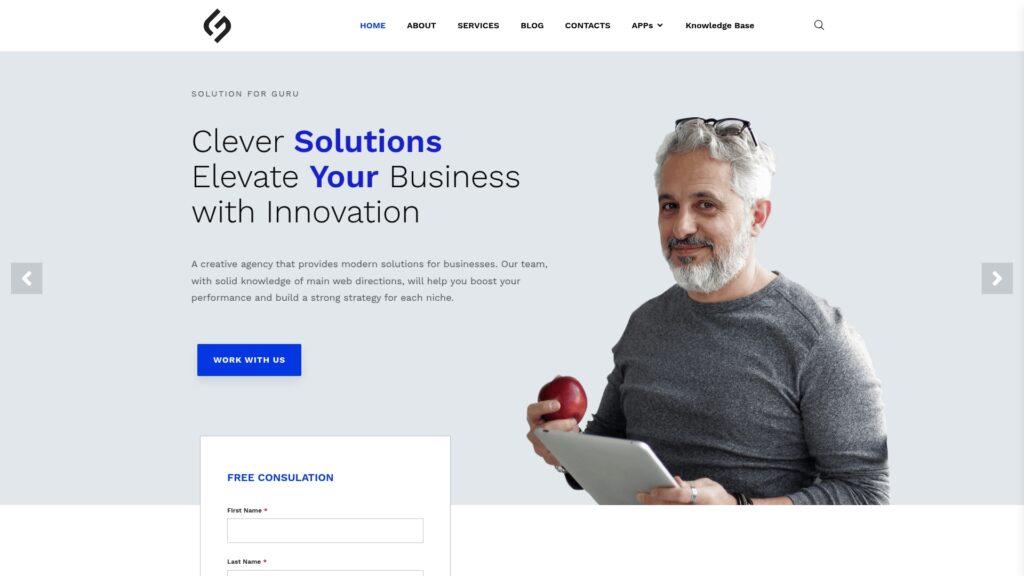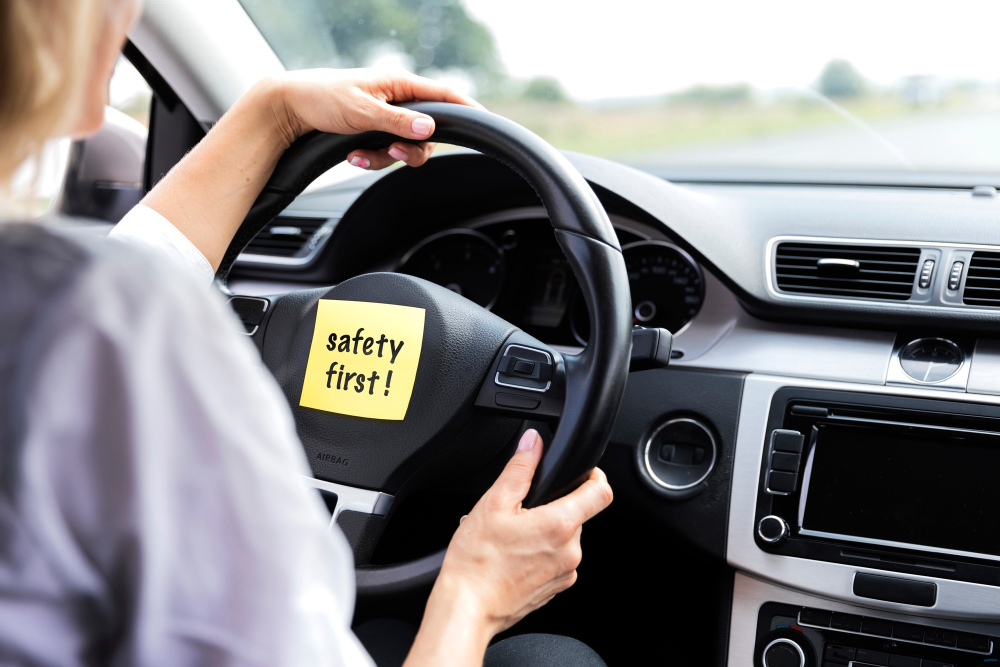Full Coverage vs. Liability: Which Auto Insurance Is Right for You?

Choosing the right auto insurance policy can feel overwhelming, especially when you’re faced with industry jargon and countless coverage options. Whether you’re a first-time car buyer, a seasoned driver looking to switch policies, or simply someone trying to make sense of your insurance bill, understanding the fundamental difference between full coverage and liability insurance is crucial. This decision affects not only your monthly budget but also your financial protection in the event of an accident.
Furthermore, the auto insurance landscape is populated with numerous providers, each offering different packages, pricing structures, and customer experiences. Companies like BiBerk, Progressive, Infinity Auto, and Next – Auto Insurance US have carved out their niches in this competitive market, providing solutions tailored to various driver needs. Consequently, making an informed choice requires understanding both the types of coverage available and the providers who offer them.
In this comprehensive guide, we’ll explore everything you need to know about full coverage versus liability insurance. Additionally, we’ll examine how leading insurance providers approach these coverage options and help you determine which type of policy aligns best with your financial situation, driving habits, and risk tolerance.
Table of Contents
- Quick Summary
- What Is the Difference Between Full Coverage and Liability Auto Insurance?
- How Does Liability Insurance Protect You on the Road?
- What Does Full Coverage Auto Insurance Actually Include?
- How Do BiBerk, Progressive, Infinity Auto, and Next – Auto Insurance US Approach Auto Coverage?
- What Are the Cost Differences Between Full Coverage and Liability Insurance?
- Which Type of Coverage Is Required by Law?
- When Should You Choose Liability-Only Insurance?
- When Is Full Coverage the Better Choice?
- Summing up
- Frequently Asked Questions
- Benefits of Cooperation with Solution for Guru
Quick Summary
Deciding between full coverage and liability auto insurance depends on several key factors including your vehicle’s value, financial situation, and risk tolerance. Liability insurance covers damages you cause to others but doesn’t protect your own vehicle, making it the minimum legal requirement and most affordable option. Conversely, full coverage combines liability with comprehensive and collision insurance, protecting your vehicle from accidents, theft, vandalism, and natural disasters.
Generally speaking, liability insurance works best for drivers with older vehicles worth less than $3,000-$4,000, those who can afford to replace their car out-of-pocket, or individuals seeking to minimize monthly expenses. Meanwhile, full coverage is ideal for newer vehicles, financed or leased cars (often required by lenders), and situations where you couldn’t easily afford to repair or replace your vehicle.
Insurance providers like BiBerk (focusing on commercial auto policies), Progressive (offering extensive customization options), Infinity Auto (specializing in non-standard and high-risk drivers), and Next – Auto Insurance US (providing digital-first insurance solutions) each bring unique approaches to both coverage types. Therefore, comparing quotes from multiple providers ensures you find the best balance between coverage and cost for your specific situation.
What Is the Difference Between Full Coverage and Liability Auto Insurance?
Understanding the fundamental distinction between full coverage and liability insurance forms the foundation of making an informed decision about your auto insurance policy. Essentially, these two coverage types represent different levels of financial protection, each designed for specific circumstances and driver needs.
Liability insurance represents the minimum coverage required by law in most states. It protects other people and their property when you’re at fault in an accident. Specifically, liability coverage includes two components: bodily injury liability, which pays for injuries you cause to others, and property damage liability, which covers damage you cause to someone else’s vehicle or property. However, liability insurance provides zero protection for your own vehicle, regardless of how the accident occurred.
On the other hand, full coverage insurance is not actually a specific type of policy but rather a term used to describe a comprehensive package that combines liability coverage with additional protections. Typically, full coverage includes liability insurance plus collision coverage (which pays for damage to your car from accidents) and comprehensive coverage (which protects against non-collision incidents like theft, vandalism, fire, or weather damage). Moreover, full coverage policies often include additional benefits such as rental car reimbursement and roadside assistance.
| Coverage Type | What It Protects | Your Vehicle Protected? | Cost Level |
|---|---|---|---|
| Liability Only | Other people and their property | No | Low |
| Full Coverage | Other people, their property, AND your vehicle | Yes | Higher |
The choice between these options isn’t merely about affordability; it’s about balancing your financial risk tolerance with your ability to absorb potential losses. Subsequently, this decision should reflect your current financial situation, your vehicle’s value, and your overall approach to risk management.
How Does Liability Insurance Protect You on the Road?

Liability insurance serves as your financial safety net when you’re responsible for causing harm to others on the road. Despite being the most basic form of auto insurance, it provides crucial protection that prevents devastating financial consequences from accidents you cause.
Understanding Bodily Injury Liability
Bodily injury liability coverage pays for medical expenses, lost wages, pain and suffering, and legal fees when you injure someone in an accident. For instance, if you run a red light and collide with another vehicle, injuring the driver and passengers, your bodily injury liability covers their hospital bills, rehabilitation costs, and compensation for time missed from work. Additionally, this coverage extends to legal defense costs if the injured parties file a lawsuit against you.
Most states require minimum bodily injury liability limits, typically expressed as two numbers (for example, 25/50). The first number represents the maximum payout per person injured ($25,000), while the second indicates the total maximum per accident ($50,000). However, these minimums often fall short of covering serious injuries, which is why many insurance experts recommend purchasing higher limits.
Exploring Property Damage Liability
Property damage liability covers the cost of repairing or replacing other people’s property that you damage in an accident. This includes not only vehicles but also fences, buildings, mailboxes, telephone poles, and any other structures you might hit. Furthermore, if you damage someone’s expensive vehicle or cause a multi-car pileup, property damage liability prevents you from paying these costs out-of-pocket.
Standard minimum requirements for property damage typically range from $10,000 to $25,000 per accident, depending on your state. Nevertheless, considering that the average cost of a new vehicle exceeds $48,000, these minimums may prove inadequate in many accident scenarios.
What Liability Insurance Does NOT Cover
Critically, liability insurance has significant limitations that every driver must understand. It does not cover:
- Damage to your own vehicle from any cause
- Your own medical expenses after an accident
- Damage to your car from theft, vandalism, or natural disasters
- Repairs when someone without insurance hits you (unless you have uninsured motorist coverage)
- Rental car expenses while your vehicle is being repaired
Progressive offers liability coverage with customizable limits that allow drivers to select protection levels matching their needs and assets. Similarly, Infinity Auto specializes in providing liability policies for drivers who may have difficulty obtaining coverage elsewhere, including those with previous accidents or violations. Meanwhile, BiBerk focuses on commercial liability coverage for businesses operating vehicles, protecting company assets from accident-related lawsuits. Next – Auto Insurance US delivers streamlined liability options through its digital platform, making it easy for drivers to purchase minimum required coverage quickly.
What Does Full Coverage Auto Insurance Actually Include?
The term “full coverage” can be somewhat misleading because no insurance policy covers absolutely everything. Nevertheless, when insurance professionals refer to full coverage, they typically mean a policy that includes liability, collision, and comprehensive coverage working together to provide maximum protection for both you and your vehicle.
Comprehensive Coverage Explained
Comprehensive coverage protects your vehicle from damage caused by events other than collisions. This includes a wide range of scenarios that might otherwise leave you paying thousands in repairs. Specifically, comprehensive coverage protects against:
- Theft: If your vehicle is stolen, comprehensive coverage pays to replace it
- Vandalism: Coverage for intentional damage like keying, broken windows, or slashed tires
- Weather damage: Protection from hail, floods, hurricanes, and falling trees
- Fire: Coverage if your vehicle catches fire or is damaged by fire
- Animal collisions: If you hit a deer or other animal, comprehensive (not collision) covers the damage
- Falling objects: Damage from debris, rocks thrown by other vehicles, or items falling from overhead
Importantly, comprehensive coverage requires you to pay a deductible before the insurance company covers the remaining costs. Deductibles typically range from $250 to $1,000, and choosing a higher deductible lowers your premium.
Collision Coverage Breakdown
Collision coverage pays to repair or replace your vehicle when it’s damaged in an accident with another vehicle or object, regardless of who’s at fault. This coverage proves invaluable because it protects you even when:
- You cause an accident yourself
- Another driver hits you but doesn’t have insurance
- You collide with a stationary object like a guardrail or tree
- Your vehicle rolls over
- You’re involved in a hit-and-run accident
Like comprehensive coverage, collision requires a deductible payment. The insurance company pays the difference between your deductible and either the repair cost or your vehicle’s actual cash value, whichever is less.
Additional Full Coverage Benefits
Beyond the three primary components, full coverage policies often include additional benefits that enhance your protection:
| Additional Coverage | What It Provides | Typical Cost |
|---|---|---|
| Uninsured/Underinsured Motorist | Protects you when hit by drivers without adequate insurance | Low to Moderate |
| Medical Payments (MedPay) | Covers medical expenses regardless of fault | Low |
| Personal Injury Protection (PIP) | Covers medical costs, lost wages, and other expenses | Moderate |
| Rental Reimbursement | Pays for rental car while yours is being repaired | Low |
| Roadside Assistance | Provides towing, jump-starts, and emergency services | Low |
| Gap Insurance | Covers difference between vehicle value and loan balance | Moderate |
Progressive distinguishes itself by offering extensive customization options for full coverage policies, allowing customers to build packages that precisely match their needs while avoiding unnecessary expenses. BiBerk provides comprehensive commercial auto coverage designed specifically for businesses, protecting company vehicles with higher liability limits and specialized coverages. Infinity Auto offers flexible full coverage options that accommodate drivers with various credit profiles and driving histories. Next – Auto Insurance US streamlines the full coverage purchasing process through its mobile-first platform, enabling customers to compare options and adjust coverage levels instantly.
How Do BiBerk, Progressive, Infinity Auto, and Next – Auto Insurance US Approach Auto Coverage?
The auto insurance marketplace features numerous providers, each with distinct approaches to coverage, pricing, and customer service. Understanding how major players like BiBerk, Progressive, Infinity Auto, and Next – Auto Insurance US structure their offerings helps you identify which provider aligns best with your needs when choosing between full coverage and liability insurance.
BiBerk: Commercial and Business Auto Insurance Specialist

BiBerk, a Berkshire Hathaway company, focuses primarily on commercial auto insurance rather than personal coverage. This specialization makes BiBerk particularly relevant for business owners, independent contractors, and entrepreneurs who need to insure company vehicles or personal vehicles used for business purposes.
BiBerk’s approach to both liability and full coverage emphasizes:
- Business-specific coverage: Policies designed for commercial vehicles including trucks, vans, and service vehicles
- Higher liability limits: Recognizing that businesses face greater liability exposure than individual drivers
- Streamlined online purchasing: Digital application process tailored for small business owners
- Flexible coverage options: Ability to add coverage for multiple vehicles and drivers under one policy
For business owners deciding between liability and full coverage, BiBerk’s commercial policies typically include higher mandatory liability limits than personal auto policies. Furthermore, businesses with valuable commercial vehicles often choose full coverage to protect essential business assets from unexpected losses that could disrupt operations.
Progressive: Customization and Technology Leader

Progressive has established itself as one of America’s largest auto insurers by emphasizing technology, transparency, and customization. Their approach to full coverage versus liability insurance centers on giving customers control over their coverage choices.
Progressive’s distinctive features include:
- Name Your Price Tool: Helps customers find coverage that fits their budget by adjusting coverage levels
- Snapshot Program: Usage-based insurance that rewards safe driving with discounts
- Extensive coverage options: Wide range of add-ons allowing precise policy customization
- Online quote comparison: Shows rates from competing insurers alongside Progressive’s pricing
- Bundle discounts: Significant savings when combining auto with home or renters insurance
Progressive excels at serving drivers who want to carefully balance cost and coverage. Their platform makes it easy to see exactly how adding or removing collision and comprehensive coverage affects premiums, empowering informed decisions. Additionally, Progressive offers competitive rates for both high-risk and preferred drivers, making them a versatile option regardless of your driving history.
Infinity Auto: Non-Standard and High-Risk Driver Specialist

Infinity Auto Insurance specializes in serving drivers who may struggle to obtain coverage from standard insurers. This includes individuals with previous accidents, DUIs, license suspensions, or limited credit history. Consequently, Infinity plays a crucial role in ensuring that all drivers can access the required liability coverage while also offering full coverage options when appropriate.
Infinity Auto’s approach emphasizes:
- Accessibility: Accepting drivers that other insurers decline
- Flexible payment options: Monthly payment plans that accommodate various budgets
- State minimum liability: Affordable policies meeting legal requirements
- Full coverage availability: Comprehensive and collision options for high-risk drivers with newer vehicles
- Spanish-language services: Bilingual customer support and materials
For drivers working with Infinity Auto, the full coverage versus liability decision often involves additional considerations. While liability-only policies keep costs down, drivers with financed vehicles must carry full coverage regardless of their risk profile. Infinity addresses this by offering full coverage packages structured for high-risk drivers, though premiums remain higher than those available to drivers with clean records through standard insurers.
Next – Auto Insurance US: Digital-First Insurance Innovation

Next – Auto Insurance US represents the emerging wave of digital-first insurance providers that leverage technology to streamline the insurance purchasing experience. Their approach focuses on convenience, transparency, and simplified decision-making through mobile and online platforms.
Next – Auto Insurance US distinguishes itself through:
- Mobile-optimized platform: Complete policy management from smartphone apps
- Instant quotes: Immediate pricing information without lengthy forms
- Simplified coverage options: Clear presentation of liability versus full coverage benefits
- Digital documentation: All policy documents accessible electronically
- Quick claims processing: Streamlined digital claims submission and tracking
For consumers deciding between liability and full coverage, Next – Auto Insurance US makes comparison shopping effortless. Their digital tools clearly illustrate cost differences and coverage gaps, helping drivers understand exactly what they’re purchasing. Moreover, the platform’s transparency appeals to younger, tech-savvy consumers who prefer managing their insurance policies digitally rather than through traditional agents or phone calls.
Comparing Provider Approaches
Understanding these different approaches helps you identify which provider’s philosophy aligns with your priorities when selecting auto insurance coverage.
What Are the Cost Differences Between Full Coverage and Liability Insurance?

Cost represents one of the most significant factors influencing the decision between full coverage and liability insurance. Understanding typical price differences, what drives those costs, and how to find the best rates enables you to make financially sound decisions about your coverage.
National Average Cost Comparison
According to recent industry data, the cost difference between liability and full coverage insurance is substantial:
- Liability-only insurance: National average approximately $600-$800 per year
- Full coverage insurance: National average approximately $1,600-$2,400 per year
Therefore, drivers who switch from full coverage to liability-only insurance typically save $1,000-$1,600 annually. However, these figures represent broad averages, and your actual costs depend on numerous factors including your location, age, driving history, and the specific vehicle you drive.
Factors Affecting Full Coverage Costs
Several variables significantly impact full coverage premiums:
Vehicle Value and Age: Newer, more expensive vehicles cost more to insure because they’re more valuable to repair or replace. A $50,000 luxury sedan requires substantially higher comprehensive and collision premiums than a $5,000 economy car.
Deductible Selection: Choosing higher deductibles ($1,000 instead of $250) substantially reduces premiums. This trade-off means you pay more out-of-pocket when filing claims but enjoy lower monthly or annual costs.
Coverage Limits: Higher liability limits, lower deductibles, and additional coverages like rental reimbursement increase costs. Conversely, selecting minimum coverage levels reduces premiums.
Location: States with higher accident rates, weather risks, theft rates, and repair costs see elevated full coverage premiums. Urban areas typically cost more than rural locations.
Driver Profile: Age, driving history, credit score (in states where it’s permitted), and annual mileage all influence rates. Young drivers and those with accidents or violations pay substantially more.
When the Cost Difference Narrows
Interestingly, certain situations minimize the cost gap between liability and full coverage:
- Older vehicles: As vehicles age and depreciate, comprehensive and collision premiums decrease proportionally
- High deductibles: Selecting $1,000 or $2,500 deductibles significantly reduces full coverage costs
- Bundle discounts: Combining auto insurance with home or renters policies often reduces full coverage premiums by 15-25%
- Safe driver discounts: Clean driving records, defensive driving courses, and usage-based insurance programs lower full coverage costs
Progressive excels at helping drivers understand cost differences through their transparent online tools that show exactly how each coverage choice affects premiums. BiBerk provides competitive commercial auto rates that reflect business risk profiles. Infinity Auto structures payment plans that make even full coverage more accessible for budget-conscious drivers. Next – Auto Insurance US uses digital efficiency to offer competitive rates for both coverage types while clearly displaying cost comparisons.
Calculating Your Break-Even Point
Financial advisors often recommend calculating when full coverage premiums exceed reasonable financial risk. A simple formula helps:
Annual Full Coverage Cost – Annual Liability Cost = Additional Full Coverage Expense
If this additional expense equals or exceeds your vehicle’s value within 3-4 years, liability-only insurance may make more financial sense. For example, if full coverage costs $1,200 more annually than liability insurance, and your vehicle is worth only $3,600, you’ll pay your car’s entire value in extra premiums within three years.
Which Type of Coverage Is Required by Law?
Legal requirements form the foundation of auto insurance decisions. Understanding what coverage your state mandates, the consequences of driving without insurance, and how these requirements affect your choice between liability and full coverage ensures you remain compliant while making informed decisions.
State Liability Insurance Mandates
Almost every state requires drivers to carry liability insurance, though specific requirements vary significantly. States establish minimum coverage limits typically expressed in a three-number format (for example, 25/50/25):
- First number: Bodily injury liability per person (in thousands)
- Second number: Bodily injury liability per accident (in thousands)
- Third number: Property damage liability per accident (in thousands)
Therefore, a 25/50/25 policy provides up to $25,000 for one person’s injuries, $50,000 total for all injuries per accident, and $25,000 for property damage per accident.
States with Different Requirements
While most states require liability insurance, a few exceptions exist:
New Hampshire and Virginia don’t require auto insurance but impose strict financial responsibility laws. Drivers must demonstrate ability to pay for damages they cause, typically through significant cash deposits or bonds.
No-fault insurance states (including Florida, Michigan, and New Jersey) require Personal Injury Protection (PIP) coverage instead of or in addition to traditional liability coverage. PIP covers your own medical expenses regardless of who caused the accident.
Comprehensive and Collision: Never Legally Required
Critically, no state legally requires comprehensive or collision coverage. Full coverage remains entirely optional from a legal standpoint. However, several situations create practical requirements for full coverage:
Financed Vehicles: Lenders universally require comprehensive and collision coverage as a condition of auto loans. This protects their financial interest in the vehicle until you’ve paid off the loan completely.
Leased Vehicles: Leasing companies similarly mandate full coverage to protect their asset throughout the lease term. Additionally, many lessors require specific coverage limits higher than state minimums.
Employer Requirements: Companies providing company vehicles or allowing personal vehicles for business use often require employees to maintain full coverage to protect company interests.
Consequences of Inadequate Coverage
Driving without required insurance or with insufficient coverage creates serious consequences:
- Legal penalties: Fines ranging from $100 to $5,000 depending on the state
- License suspension: Temporary or extended suspension of driving privileges
- Vehicle registration revocation: Inability to legally register or operate your vehicle
- SR-22 requirement: Costly proof of insurance filing required for reinstatement
- Personal liability: Full financial responsibility for any damages you cause
Progressive, Infinity Auto, BiBerk, and Next – Auto Insurance US all ensure their policies meet or exceed state minimum requirements. However, insurance experts consistently recommend purchasing coverage above these minimums because state minimums rarely provide adequate protection for serious accidents.
Uninsured Motorist Coverage Considerations
Many states require or strongly recommend uninsured/underinsured motorist coverage, which protects you when hit by drivers without adequate insurance. This coverage technically falls outside the liability versus full coverage debate but represents an important consideration. Since approximately 13% of drivers nationally operate vehicles without insurance, uninsured motorist coverage provides crucial protection against financial loss from accidents caused by these drivers.
When Should You Choose Liability-Only Insurance?
Liability-only insurance offers significant cost savings but provides limited protection. Determining whether this coverage level suits your situation requires honest assessment of your financial circumstances, vehicle value, and risk tolerance. Several specific scenarios make liability-only insurance the appropriate choice.
Older, Low-Value Vehicles
The most common and financially sound reason to choose liability-only coverage involves vehicle value. When your car’s actual cash value falls below $3,000-$4,000, paying for comprehensive and collision coverage often makes little financial sense.
Consider this example: If your vehicle is worth $2,500 and you carry $500 deductibles, the maximum insurance payout for a total loss is only $2,000. If comprehensive and collision coverage costs $600 annually, you’d need to drive your vehicle for more than three years without major damage to break even on the insurance investment. Meanwhile, that $2,500 represents the maximum possible loss—a risk many people can absorb without financial devastation.
Progressive‘s valuation tools help drivers accurately assess their vehicle’s worth, making this decision clearer. Similarly, Next – Auto Insurance US provides transparent cost-benefit analyses through their digital platform.
Strong Financial Reserves
Drivers with substantial emergency savings may reasonably choose liability-only coverage even for moderately valuable vehicles. If you maintain $10,000-$20,000 in accessible savings specifically for emergencies, you possess the financial cushion to replace or repair your vehicle without insurance assistance.
This approach essentially treats you as your own insurance company. The premiums you save by avoiding comprehensive and collision coverage can be redirected to savings, potentially accumulating more value over time than you’d receive from insurance claims. However, this strategy requires discipline and genuine financial stability—not merely optimistic assumptions about future earnings.
Vehicles You Can Afford to Replace
Some drivers own vehicles they could comfortably replace out-of-pocket if necessary. For instance, if you drive a paid-off vehicle worth $5,000 and could purchase another similar vehicle without financial hardship, liability-only insurance might suit your situation.
This decision becomes more appealing when you own multiple vehicles. If one vehicle suffers a total loss, you still have transportation while you arrange replacement, reducing the urgency and financial pressure of the situation.
Minimizing Insurance Costs as a Priority
Budget-conscious drivers, particularly those facing temporary financial constraints, may choose liability-only coverage to minimize expenses. Young drivers establishing their careers, families managing tight budgets, or individuals recovering from financial setbacks often prioritize immediate cash flow over comprehensive vehicle protection.
Infinity Auto specializes in serving drivers seeking affordable liability coverage, offering flexible payment options that make even minimal coverage more accessible. Their approach recognizes that some drivers prioritize meeting legal requirements and protecting others while accepting personal risk for their own vehicles.
Situations Requiring Caution
Despite potential savings, certain circumstances argue against liability-only coverage:
- Dependence on your vehicle for work: If losing your vehicle would jeopardize your employment, full coverage protects your livelihood
- Limited public transportation: In areas without reliable transit alternatives, vehicle replacement becomes urgent and costly
- High vehicle replacement costs: If vehicles similar to yours would cost significantly more to replace than your current vehicle’s value, full coverage may be worthwhile
- Recent financial struggles: If you’ve recently faced bankruptcy, foreclosure, or major medical bills, you may lack the financial reserves to weather another significant expense
Making the Transition from Full Coverage
Many drivers appropriately transition from full coverage to liability-only as their vehicles age. This transition makes sense when:
- Your vehicle’s value has depreciated to $3,000-$4,000 or less
- You’ve built sufficient emergency savings to cover potential losses
- Your auto loan has been fully paid, removing lender requirements
- The annual cost of comprehensive and collision coverage approaches or exceeds your vehicle’s value
BiBerk‘s commercial clients often face similar decisions about aging business vehicles, while Progressive and Next – Auto Insurance US make the transition seamless through their online platforms that allow instant coverage adjustments.
When Is Full Coverage the Better Choice?

While liability-only insurance offers attractive savings, numerous situations strongly favor full coverage. Understanding when comprehensive protection justifies higher premiums helps ensure you don’t expose yourself to devastating financial risk while pursuing short-term savings.
Newer Vehicles and High-Value Cars
Any vehicle worth more than $5,000-$10,000 generally warrants full coverage consideration. Newer vehicles, luxury cars, and models with high replacement costs create potential losses that exceed most people’s ability to comfortably absorb. Moreover, newer vehicles typically feature advanced safety systems, expensive electronics, and specialized parts that make repairs costly even for seemingly minor damage.
For example, a three-year-old vehicle worth $25,000 represents a substantial investment. Without full coverage, a single accident could leave you without transportation and facing a devastating financial loss. The peace of mind provided by knowing you’re protected from such scenarios often justifies the additional premium cost.
Progressive and Next – Auto Insurance US offer particularly competitive full coverage rates for newer vehicles, often incorporating features like accident forgiveness that provide additional protection for valuable cars.
Financed or Leased Vehicles
When you finance or lease a vehicle, full coverage isn’t optional—it’s mandatory. Lenders and leasing companies require comprehensive and collision coverage to protect their financial interest in the vehicle until you’ve completed all payments.
Additionally, financed vehicles create a unique risk called being “underwater” or “upside down” on your loan. This occurs when you owe more than the vehicle’s current value, a common situation during the first few years of financing when depreciation outpaces principal payments. Without full coverage (particularly gap insurance), a total loss leaves you paying off a loan for a vehicle you no longer possess.
BiBerk addresses this concern for commercial vehicle financing, ensuring businesses maintain adequate protection for financed fleet vehicles. Infinity Auto works with customers who may have challenged credit but still need full coverage to satisfy lender requirements.
Limited Financial Reserves
Honestly assessing your emergency savings proves crucial when choosing coverage. If replacing or extensively repairing your vehicle would create significant financial hardship—potentially requiring loans, credit cards, or depleting retirement savings—full coverage provides essential protection.
Consider these questions:
- Could you immediately access $5,000-$10,000 without borrowing?
- Would vehicle replacement force you to skip other financial obligations?
- Do you have family members or support systems that could help in an emergency?
- Would losing your vehicle affect your ability to work and earn income?
If these questions reveal financial vulnerability, full coverage transforms from a luxury into a necessity. The predictable, manageable cost of insurance premiums provides protection against unpredictable, potentially overwhelming vehicle losses.
High-Risk Environments
Your driving environment significantly influences whether full coverage makes sense. Certain situations dramatically increase the likelihood of comprehensive or collision claims:
Severe weather areas: Regions prone to hail, hurricanes, floods, or severe winter weather see higher rates of comprehensive claims. Infinity Auto and Progressive both serve customers in high-risk weather zones where comprehensive coverage proves particularly valuable.
High-theft areas: Urban neighborhoods with elevated vehicle theft rates make comprehensive coverage essential for protecting against total loss from theft.
Congested traffic: Daily commutes through heavy traffic increase accident risks, making collision coverage more valuable.
Limited parking options: Street parking or unsecured parking areas elevate risks of vandalism, theft, and hit-and-run incidents.
Business and Commercial Use
BiBerk specializes in this scenario: vehicles used for business purposes almost always require full coverage. Business owners cannot afford the operational disruptions caused by uninsured vehicle losses. Whether you operate a catering company dependent on your commercial kitchen van or a contracting business requiring work trucks, vehicle unavailability directly impacts revenue.
Additionally, commercial vehicles often carry expensive equipment and tools, creating liability beyond the vehicle itself. Full coverage with appropriate riders protects both the vehicle and its contents.
When Full Coverage Becomes More Affordable
Several situations make full coverage more accessible:
Bundle discounts: Combining auto insurance with home or renters insurance often reduces full coverage premiums by 15-25%. Progressive excels at bundle offerings that make comprehensive protection more affordable.
High deductibles: Selecting $1,000 or $2,500 deductibles substantially reduces comprehensive and collision premiums while maintaining protection against catastrophic losses.
Safety features and anti-theft devices: Modern vehicles equipped with advanced safety systems, GPS tracking, and anti-theft technology qualify for discounts that narrow the gap between liability and full coverage costs.
Good driver discounts: Clean driving records, completion of defensive driving courses, and usage-based insurance programs reward safe drivers with reduced full coverage premiums. Next – Auto Insurance US leverages telematics data to offer personalized rates based on actual driving behavior.
Summing up
Deciding between full coverage and liability auto insurance represents a significant financial choice that affects both your current budget and your future financial security. Throughout this comprehensive guide, we’ve explored the fundamental differences between these coverage types, examined when each makes sense, and analyzed the various factors that should influence your decision.
Liability insurance provides essential protection against legal and financial consequences when you cause harm to others, meeting minimum legal requirements while minimizing costs. This coverage proves ideal for drivers with older vehicles worth less than $3,000-$4,000, those maintaining substantial emergency savings, and individuals who can absorb potential vehicle losses without financial devastation. The significant cost savings—typically $1,000-$1,600 annually compared to full coverage—makes liability-only insurance attractive for budget-conscious drivers and those with vehicles nearing the end of their useful life.
Conversely, full coverage insurance combines liability protection with comprehensive and collision coverage, protecting your vehicle from accidents, theft, vandalism, weather damage, and numerous other risks. This comprehensive protection makes sense for newer vehicles, financed or leased cars, situations where vehicle replacement would create financial hardship, and drivers operating in high-risk environments. While premiums run considerably higher than liability-only policies, full coverage provides peace of mind and financial stability that many drivers find invaluable.
Whatever coverage you choose, comparing quotes from multiple providers including BiBerk for commercial needs, Progressive for customization and technology, Infinity Auto for accessibility and flexibility, or Next – Auto Insurance US for digital convenience ensures you receive competitive rates and appropriate coverage for your specific needs. The auto insurance marketplace remains highly competitive, and insurers price identical coverage differently based on their underwriting models and target customers.
Finally, adequate insurance – whether liability-only or full coverage—represents a fundamental element of responsible vehicle ownership and financial planning. While the temptation to minimize insurance costs by selecting inadequate coverage or avoiding insurance entirely may be strong, the potential consequences of uninsured or underinsured losses far exceed any premium savings. Choose coverage you can afford, but ensure that coverage provides meaningful protection for both your legal obligations and your financial well-being.
Frequently Asked Questions
Switching from liability-only to full coverage typically increases your annual premium by $1,000-$1,600 on average, though actual costs vary significantly based on your vehicle’s value, age, your driving record, location, and chosen deductibles. Newer, more valuable vehicles see larger increases because comprehensive and collision coverage costs reflect replacement values. For example, adding full coverage to a three-year-old sedan worth $20,000 might cost $800-$1,200 annually, while the same coverage for a ten-year-old economy car worth $4,000 might add only $300-$500 to your yearly premium. Furthermore, switching to full coverage often makes sense when you purchase a newer vehicle, receive a significant raise that increases your financial capacity, or move to an area with higher weather or theft risks. Conversely, many drivers appropriately switch from full coverage to liability-only when their vehicle’s value drops below $3,000-$4,000 or when they build emergency savings sufficient to cover potential vehicle losses without insurance assistance.
Yes, absolutely. Multi-vehicle households frequently carry different coverage levels on different vehicles based on each vehicle’s value, usage, and financing status. This flexible approach optimizes insurance spending by providing comprehensive protection where it’s most valuable while minimizing costs on vehicles where full coverage isn’t justified.
For example, a family might maintain full coverage on a newer financed SUV used for daily commuting and transporting children, while carrying only liability coverage on an older paid-off sedan used occasionally for short errands. This strategy ensures the valuable, heavily-used, financed vehicle receives complete protection while avoiding unnecessary premiums on the older backup vehicle. BiBerk commonly structures commercial policies this way, providing full coverage for primary business vehicles while offering liability-only for older backup trucks or seasonal equipment.
Benefits of Cooperation with Solution for Guru
Navigating the complex world of auto insurance requires not only understanding coverage options but also accessing reliable information and expert guidance. Solution for Guru (https://www.solution4guru.com/) provides comprehensive insurance education and consultation services that help consumers make informed decisions about their coverage needs.

By cooperating with Solution for Guru, you gain a knowledgeable partner committed to your financial wellbeing and insurance optimization. Whether you’re deciding between full coverage and liability insurance, evaluating providers like BiBerk, Progressive, Infinity Auto, or Next – Auto Insurance US, or simply seeking to understand your current policy better, Solution for Guru provides the expertise and support that transforms insurance from a confusing obligation into a strategic element of comprehensive financial planning.
Recommended
- What’s Covered and What’s Not: Breaking Down Auto Insurance Coverage Types
- What Are the Best Auto Insurance Options for Rideshare Drivers (Uber, Lyft, etc.)?
- How to Get Affordable Auto Insurance After an Accident or Ticket
- Auto and Renters Insurance Bundle
- Preferred Auto Insurance Companies
- How to Get Auto Insurance Online
- Auto Insurance for Farms
- Auto International Insurance
- Comparing Commercial Auto Insurance
- The Top Commercial Auto Insurance Options



